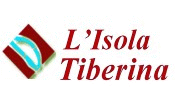Origin and geology of the island
Article Index
A) THE TRADITION
According to the legend reported in the literary sources (Dionysus Halicarnassus 5.13.2-4; Livius 2.5.1 [*] - 4; Plutarch Publ. 8.1-8 [*]) the island was generated by the progressive sedimentation of various materials and mud on the harvest of the Tarquini, reaped by Roman people in Campo Marzio and thrown down into Tiber river as considered impure after Tarquinio il Superbo was expelled from Rome in the summer of 509 b.C. (245 a.U.c.) when the low river level made easy their run aground.
The event, as recounted by Livius, was reconsidered around 1450 by Flavio Biondo as follows [1*]:
Il Campo Martio ci tira a dire de' duoi luoghi, cioè de l'Equiria, e de l'isola di Giove: ma del primo ci induggiaremo a dirne con gli spettacoli publici, de l'isola dice Livio, che essendo nel Campo Martio mature le biade di Tarquinio già cacciato di Roma, e reputandosi quel frutto irreligioso, ferono i Romani mieterle, e buttarle nel fiume che gli era presso; ma perciò che il Tevere a quel tempo correa molto piano, come suol di estate fare, quelli fasci di biade si fermorono in quella seccaggine, e limacci, dove poi cumulandovisi anco de le altre cose che suole il fiume sempre portare in giù, venne a poco a poco a farvisi una isoletta; e crede, che doppo anco si ci volgesse l'industria de gli huomini a farla più stabile, con buttarvi d'altre cose più gravi, e più ferme, onde havesse possuto esser bastante a sostenere i tempij, e gli portichi che vi furon fatti.
The late temporal placing of the origin of the island, as passed on by historians (even 245 years after the Rome foundation), caused many scholars to suppose the island was really a private property of Tarquini and that only after their expulsion from the town the island should return to the people. According to some scholars the legend of the harvest thrown down into the river should indicate that the island was really the Tarquini's granary.



